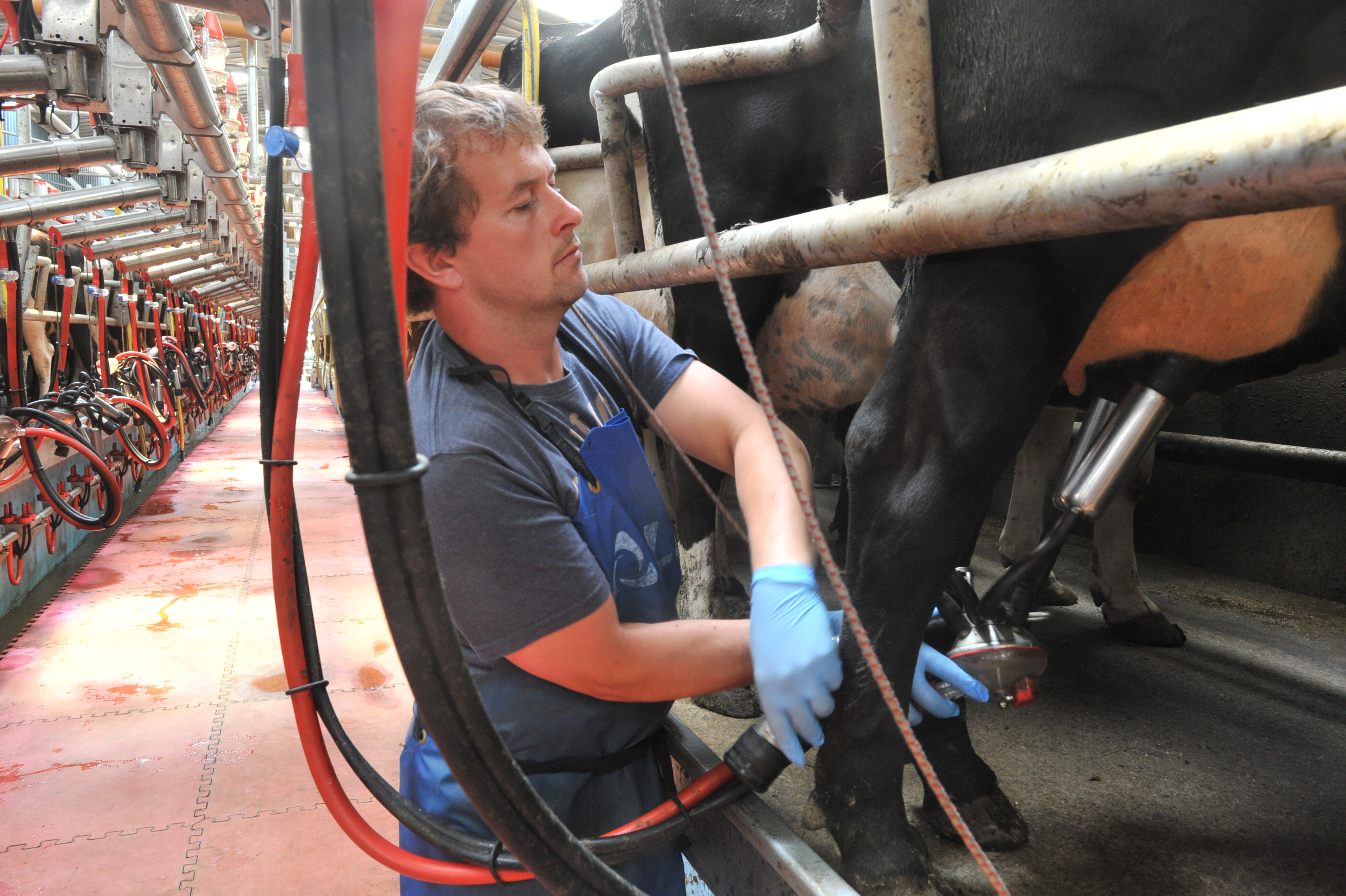Figuring out the key to good breeding
Wednesday, 18 December 2019
Selecting an economic profit index appropriate to a milk production system can drive profitability in dairy herds.
At Tyddyn y Eglwys near Llanfyrnach, one of our strategic dairy farms, the spring calving index (£SCI) for spring block-calving herds informs breeding decisions in the Friesian x Jersey herd.
The farm is owned by Kim and Bryony Petty and has been operated as a joint venture since 2013 with Dylan and Hannah Harries acting as contract farmers.
Total land area is around 283ha, which is mostly grass and includes 160ha of milking platform.
The business is expanding the size of the herd and is on course to be milking 610 cows next spring – it is a young herd with 85 per cent of animals in their third, fourth or fifth lactation. Herd replacement rate currently averages 19 per cent.
“We want a profitable cow and one that we like to milk at either end of the day with as few problems along the way as possible,’’ said Mr Harries.

For the last three years, the herd has been bred to a Jersey to reduce cow size while retaining high milk solids. Cow weight currently averages 483kg but with maiden heifers now averaging 430kg in their first lactation the predicted mature cow weight is 470kg.
The business is using sexed semen to reduce the number of dairy bull calves born; the remainder of the herd is bred to Aberdeen Angus beef sires.
Mr Harries says there is a hidden cost to this because it has reduced fertility rates in the older cows.
Breeding decisions within the herd are important and by utilising the £SCI – one of three genetic indexes which measure an animal’s ability to pass its genes on to the next generation – it is easier to match bulls to the system at Tyddyn y Eglwys.
The herd’s genetic merit is in the top 5 per cent for block calving systems.
For Mr Harries, milk solids per kilogramme of liveweight is the most important trait for a system aiming to turn grass into milk for cheese.
Milk solids output per hectare currently averages 780kg with 138kg of those coming from forage.
Bringing superior genetics into the herd makes a significant difference to profitability, according to our research.
In spring calving herds, the difference between good and bad genetics is as much as £186 per cow per year, says Fern Pearston, animal genetics manager at AHDB Dairy.
“For a 200-cow herd, paying attention to genetics can be worth £20,000 a year,’’ Ms Pearston told farmers attending an open day at Tyddyn y Eglwys.
She advised farmers to only select bulls in the top 20 per cent of rankings, targeting weaknesses in their herd while maintaining the existing strengths.
Economic indices were developed to easily rank animals that transmit the most profitable combination of genetic traits to suit a specific farming system.
In addition to the £SCI, there is £PLI, the profitable lifetime index for all-year-round calving herds, and £ACI, the autumn calving index for autumn block-calving herds.
The indices represent the additional profit that a high-ranking bull is predicted to return via each of its milking daughters over her lifetime, compared with an average bull of £0.
The value and ranking of bulls on each of these three indices varies because each system has different costs and returns.
The £ACI and £SCI can be used to directly compare genetic qualities of animals from different breeds but the £PLI compares bulls within a breed.
Within the rankings, farmers are advised to focus on the key traits that will improve their own herd.
Some of the most desirable traits include milk, fat and protein, lifespan, fertility, somatic cell count, mastitis, calf survival and lameness advantage.
As the first step to improving herd genetics, Ms Pearston recommends assessing the strengths and weaknesses of the current breeding programme by requesting an AHDB Dairy herd genetic report, available to dairy farmers who are fully milk recording. This report will clearly show strengths and weaknesses within a herd.
Related content
Find out more about Tyddyn yr Eglwys
Topics:
Sectors:
Tags:

